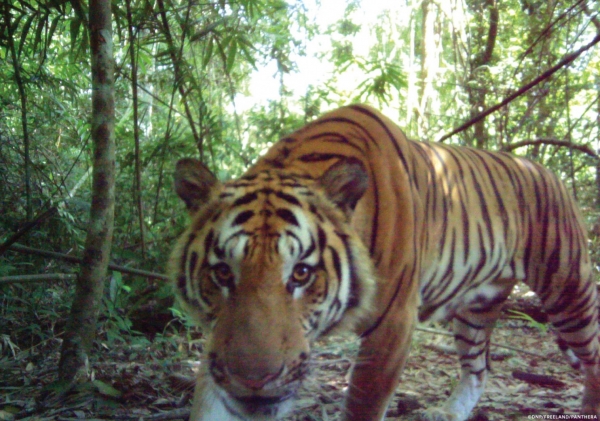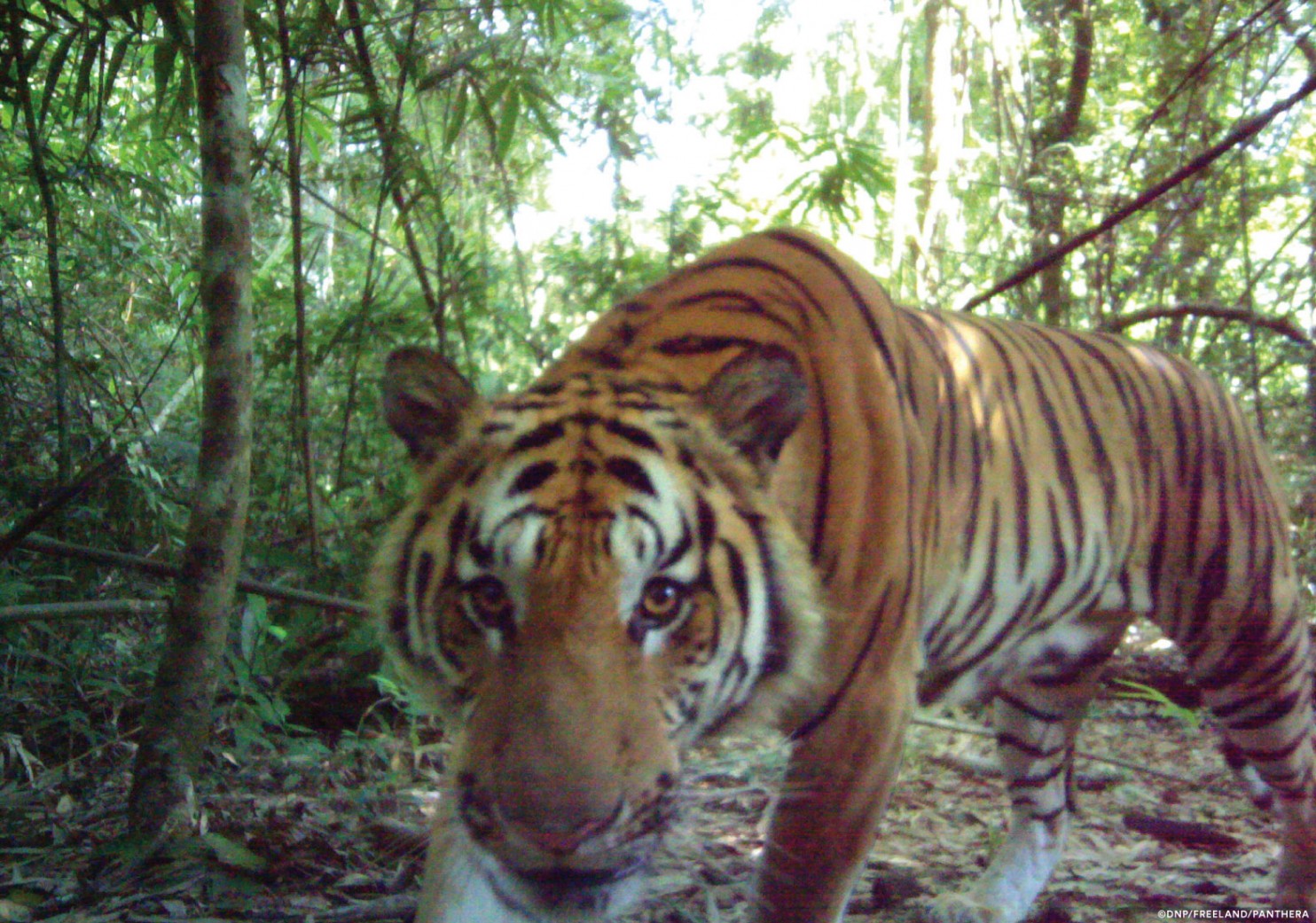By Kaweewit Kaewjinda | AP March 28 at 10:07 AM
BANGKOK — Conservationists say they have evidence that the critically endangered Indochinese tiger is breeding in a Thai jungle, giving hope for the survival of an animal whose total population may be less than 300.
Thailand’s Department of National Parks, Wildlife and Plant Conservation along with two private organizations announced Tuesday they have photographic evidence of new tiger cubs in eastern Thailand, supporting a scientific survey that confirmed the existence of the world’s second breeding population of the tigers. The other breeding ground is in the Huai Kha Khaeng Wildlife Sanctuary in western Thailand.
The Thai agency, along with Freeland, an organization fighting human and animal trafficking, and Panthera, a wild cat conservation group, said only 221 Indochinese tigers are estimated to remain in two Asian countries, Thailand and Myanmar.
It is feared that tigers, which once ranged across much of Asia, are now all but extinct in southern China, Cambodia, Laos, Vietnam and much of Myanmar, the groups said in a joint statement. Indochinese tigers are smaller than the better-known Bengal and Siberian tigers.
“Poaching for the illegal wildlife trade stands as the gravest threat to the survival of the tiger, whose numbers in the wild have dwindled from 100,000 a century ago to 3,900 today,” it said.
The statement noted the tigers’ ”remarkable resilience given wildlife poaching and illegal rosewood logging” in the eastern jungle.
“The Thai forestry department proved that with protection you can not only bring tigers back, but now the western forest complex, specifically Huai Kha Khaeng, is a global model of tiger conservation,” Alan Rabinowitz, chief executive officer of Panthera said in a video call from New York. “It is one of the best protected and best tiger areas left in the world. Thailand has shown that you can protect tigers and bring them back. They can do this now in the eastern forest complex as they’ve done in the western forest complex.”
Copyright 2017 The Associated Press. All rights reserved. This material may not be published, broadcast, rewritten or redistributed.
————————–
Source: Washington Post; Royal Thai Embassy, Washintgon D.C.






